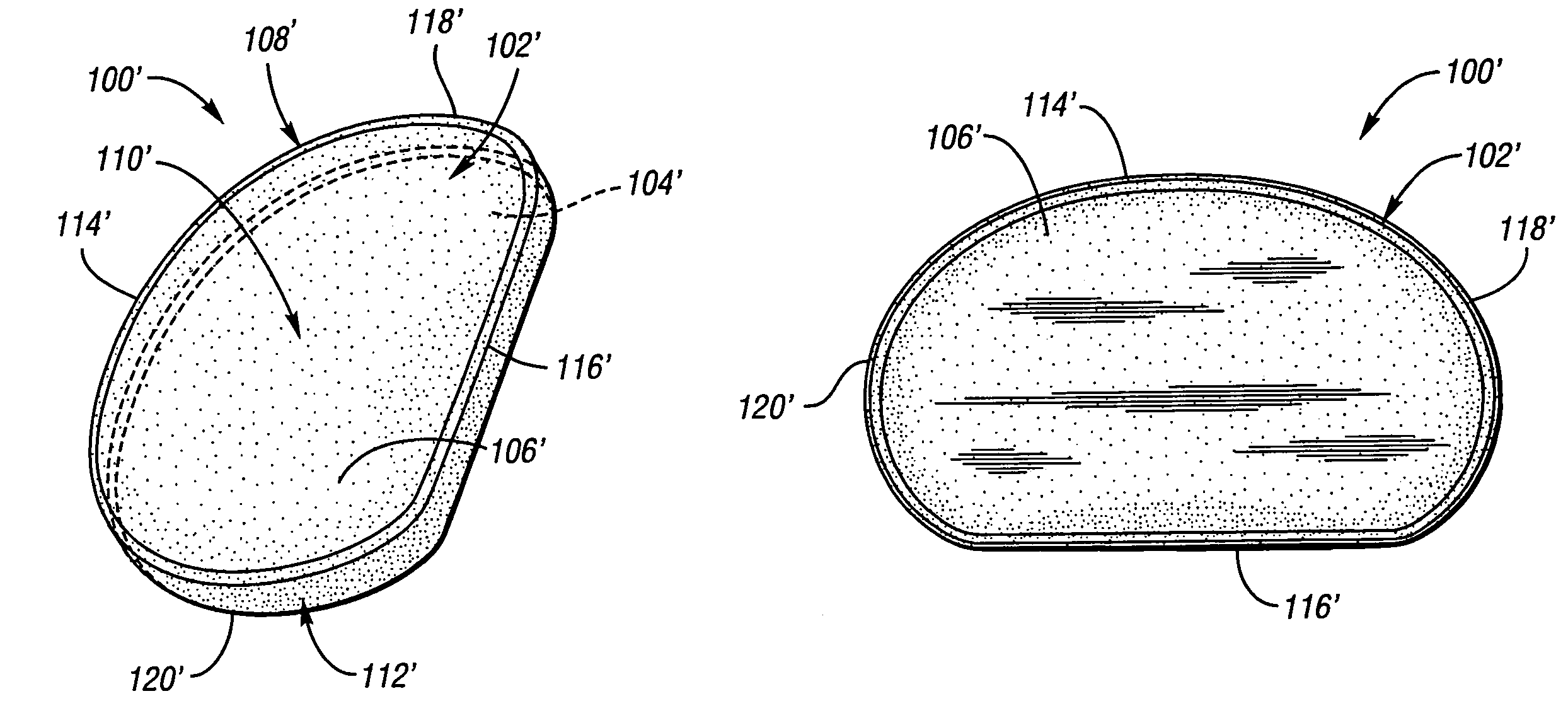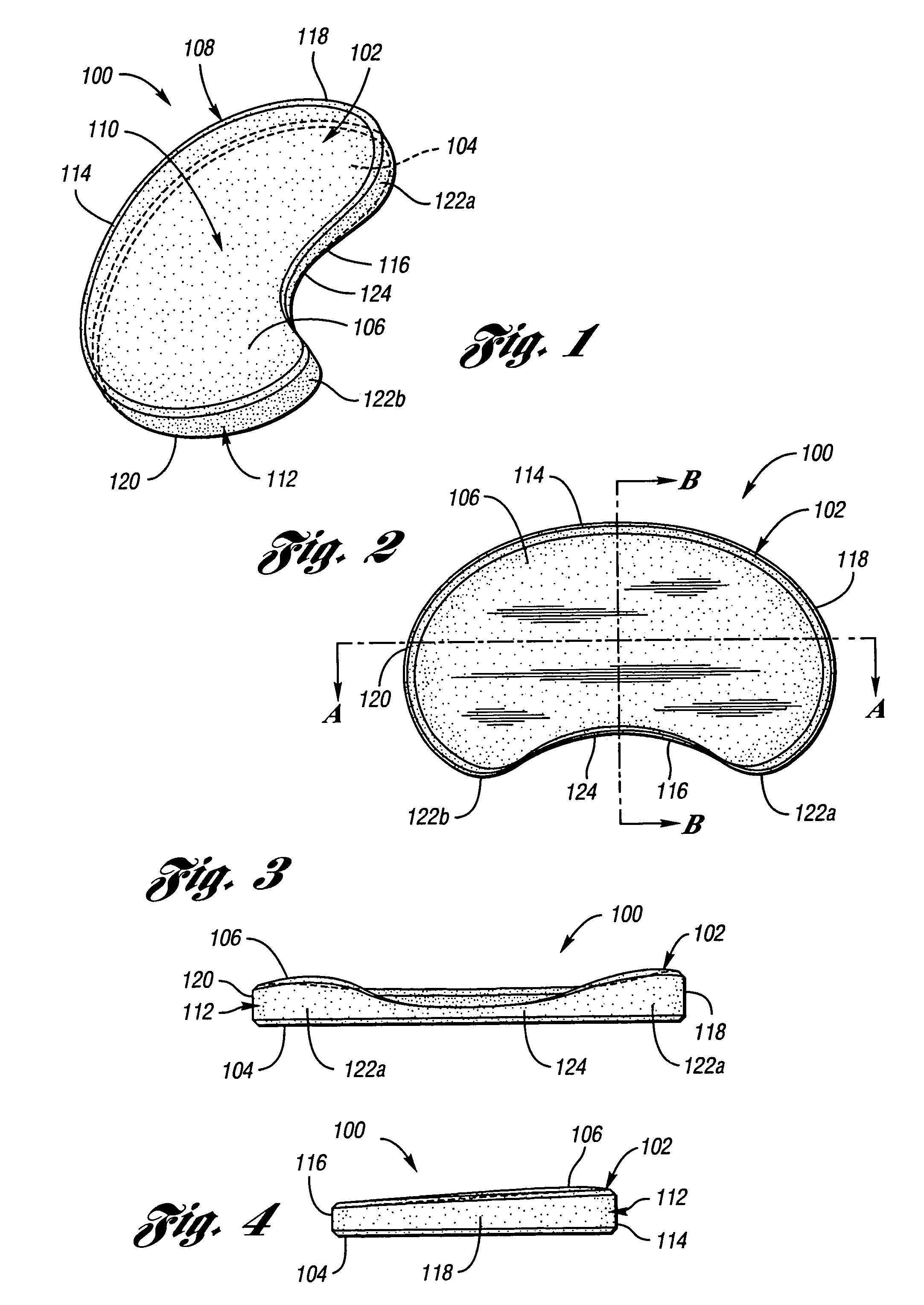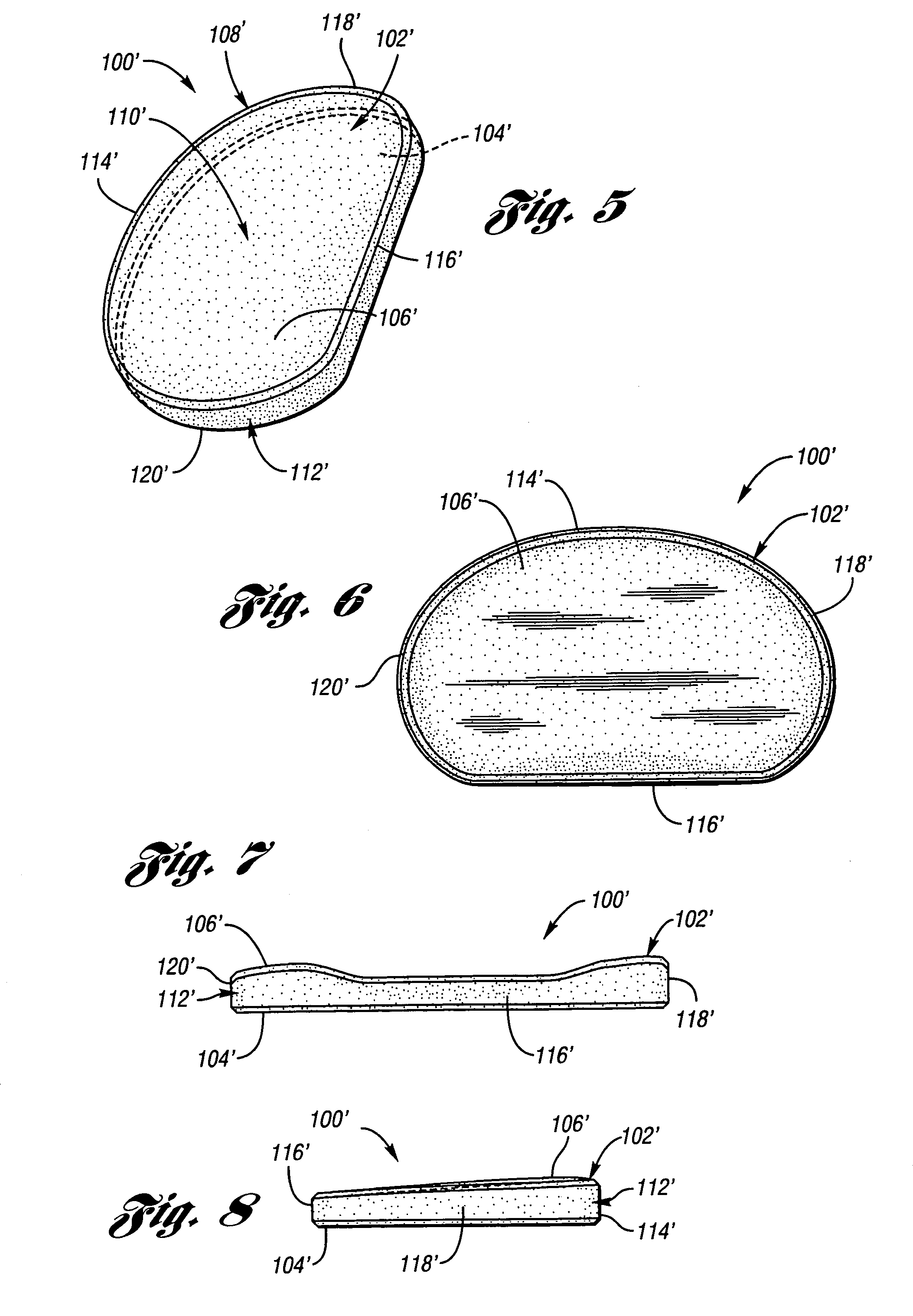Surgically implantable knee prosthesis
a knee joint and prosthesis technology, applied in knee joints, ligaments, medical science, etc., can solve the problems of chondromalacia, damage to these surfaces, degenerative tearing of meniscal cartilage,
- Summary
- Abstract
- Description
- Claims
- Application Information
AI Technical Summary
Benefits of technology
Problems solved by technology
Method used
Image
Examples
first embodiment
[0043]Turning now to FIGS. 1-4, an implantable knee prosthesis according to the present invention is illustrated and designated generally by reference numeral 100. Prosthesis 100 includes a body 102 having a generally elliptical shape in plan and including a bottom, or tibial, surface 104 and an opposite top, or femoral, surface 106. Bottom surface 104 is substantially flat, wherein the contour of bottom surface 104 is preferably generally the same as the associated contour of the tibial plateau after any necessary bone resection as described below. Due to its flat contour, bottom surface 104 is advantageously optimized for use with tibial plateaus with large (>0.5 mm) defects. When large tibial defects are present, potential complications can include the femoral condyle disengaging from the femoral surface of the prosthesis, traveling anteriorly or posteriorly independent of the prosthesis, and causing the prosthesis to disclocate or cause pain for the patient. Since flat bottom su...
second embodiment
[0047]With reference to FIGS. 5-8, prosthesis 100′ is depicted, wherein reference numerals are the same as the embodiment of FIGS. 1-4 except for the addition of a prime (′) designation. If the tibial spine has been substantially resected, no side indentation is necessary and prosthesis 100′ is preferably used as it has a generally straight second side 116′ without lobes 122a, 122b. With this exception, it is understood that the foregoing description of prosthesis 100 applies equally well to prosthesis 100′. Accordingly, it is understood that the term “generally elliptical” is intended to include all construction methods which yield a generally planar shape which is longer in one direction than in the transverse direction and has rounded corners, and that prosthesis 100, 100′ of the present invention is not otherwise limited to any particular shape.
[0048]Contrary to most devices which are composed of soft, compliant material designed to assume the function of the natural meniscus wh...
PUM
 Login to View More
Login to View More Abstract
Description
Claims
Application Information
 Login to View More
Login to View More - R&D
- Intellectual Property
- Life Sciences
- Materials
- Tech Scout
- Unparalleled Data Quality
- Higher Quality Content
- 60% Fewer Hallucinations
Browse by: Latest US Patents, China's latest patents, Technical Efficacy Thesaurus, Application Domain, Technology Topic, Popular Technical Reports.
© 2025 PatSnap. All rights reserved.Legal|Privacy policy|Modern Slavery Act Transparency Statement|Sitemap|About US| Contact US: help@patsnap.com



